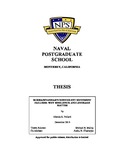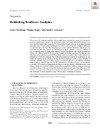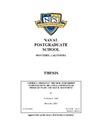Burma/Myanmar’s nonviolent movement failures: why resilience and leverage matter
| dc.contributor.advisor | Malley, Michael S. | |
| dc.contributor.advisor | Chatterjee, Anshu N. | |
| dc.contributor.author | Pollard, Glenda K. | |
| dc.date | Dec-15 | |
| dc.date.accessioned | 2016-02-17T18:38:01Z | |
| dc.date.available | 2016-02-17T18:38:01Z | |
| dc.date.issued | 2015-12 | |
| dc.identifier.uri | https://hdl.handle.net/10945/47844 | |
| dc.description.abstract | Empirical research shows that nonviolent movements tend to be more effective than armed rebellion in influencing regime change, but in Burma (renamed Myanmar in 1989), the people failed twice in overthrowing the military-controlled government. The 1988 student-led movement had nationwide support and incapacitated the government but fell short of severing the military’s control of the state. In 2007, the monk-led Saffron Revolution attracted greater international attention but had less domestic participation and crumbled under violent suppression. Using Kurt Schock’s analytical framework for explaining the outcome of unarmed uprisings, which he describes in the 2005 Unarmed Insurrections: People Power Movements in Nondemocracies, this thesis analyzes both movements in Burma/Myanmar in terms of their resilience and leverage. The comparative case studies of these failed movements show that they were unsuccessful because they lacked resilience due to fragmentation and a lack of leadership, and they lacked leverage due to the regime’s unity and its capacity to pursue an effective repressive strategy against the opposition. This study concludes that the regime’s unshakable solidarity was the main reason for the movements’ failure. Resilience is important for an unarmed uprising to amass support and build strength, but without leverage, its chance of succeeding is low. | en_US |
| dc.description.uri | http://archive.org/details/burmamyanmarsnon1094547844 | |
| dc.publisher | Monterey, California: Naval Postgraduate School | en_US |
| dc.rights | This publication is a work of the U.S. Government as defined in Title 17, United States Code, Section 101. Copyright protection is not available for this work in the United States. | en_US |
| dc.title | Burma/Myanmar’s nonviolent movement failures: why resilience and leverage matter | en_US |
| dc.type | Thesis | en_US |
| dc.contributor.department | National Security Affairs | |
| dc.contributor.department | National Security Affairs | en_US |
| dc.subject.author | Burma | en_US |
| dc.subject.author | Myanmar | en_US |
| dc.subject.author | nonviolent movement | en_US |
| dc.subject.author | pro-democracy movement | en_US |
| dc.subject.author | failure | en_US |
| dc.subject.author | resilience and leverage | en_US |
| dc.subject.author | student activists | en_US |
| dc.subject.author | civil society | en_US |
| dc.subject.author | military regime | en_US |
| dc.subject.author | repressive strategy | en_US |
| dc.subject.author | Saffron Revolution | en_US |
| dc.subject.author | monks | en_US |
| dc.subject.author | sangha | en_US |
| dc.subject.author | international community | en_US |
| dc.subject.author | Ne Win | en_US |
| dc.subject.author | Than Shwe | en_US |
| dc.subject.author | Aung San Suu Kyi | en_US |
| dc.description.service | Lieutenant Commander, United States Navy | en_US |
| etd.thesisdegree.name | Master of Arts in Security Studies (Far East, Southeast Asia and the Pacific) | en_US |
| etd.thesisdegree.level | Masters | en_US |
| etd.thesisdegree.discipline | Security Studies (Far East, Southeast Asia and the Pacific) | en_US |
| etd.thesisdegree.grantor | Naval Postgraduate School | en_US |
| dc.description.distributionstatement | Approved for public release; distribution is unlimited. |
Files in this item
This item appears in the following Collection(s)
-
1. Thesis and Dissertation Collection, all items
Publicly releasable NPS Theses, Dissertations, MBA Professional Reports, Joint Applied Projects, Systems Engineering Project Reports and other NPS degree-earning written works.





